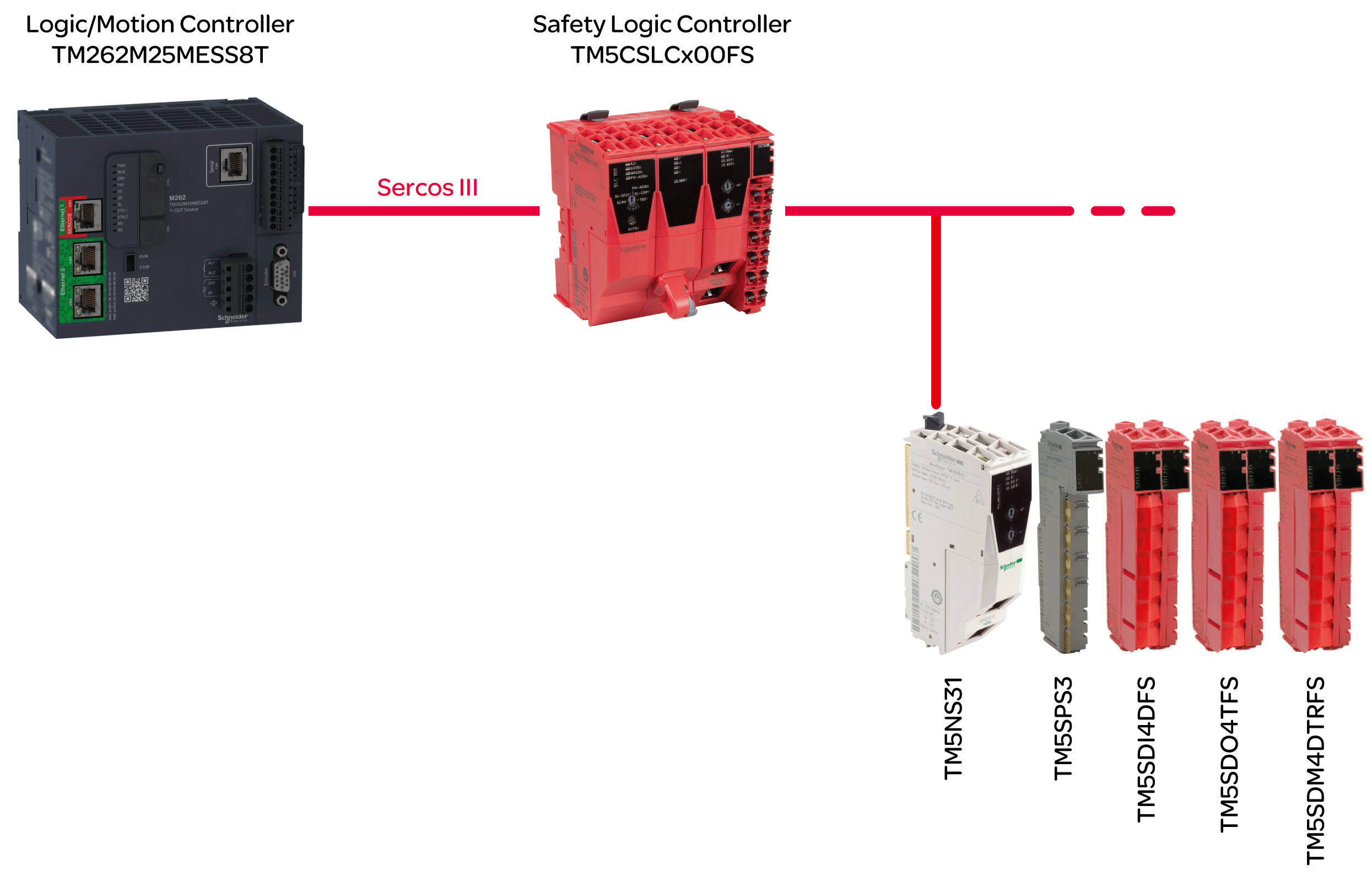Logic/Motion Controller Application with Embedded Safety - System Overview
Architecture
The present document describes the integration of safety-related components (embedded safety) by using a Safety Logic Controller (SLC) and safety-related TM5/TM7 modules into a Logic/Motion Controller application via the Sercos III bus.
The following figure illustrates a small application setup which is used for explanatory purposes in the present document:

Devices Used
The following devices are used in the sample project described in the present document:
-
TM262M25MESS8T Logic/Motion Controller (Compatible Logic/Motion Controller Types)
-
TM5CSLCx00FS Safety Logic Controller
-
TM5NS31 TM5 SERCOS III Bus Coupler
-
TM5SPS3 Power Supply Module
-
TM5SDI4DFS Digital Input Safety Module
-
TM5SDO4TFS Digital Output Safety Module
-
TM5SDM4DTRFS Digital Mixed Safety Module
The safety-related part of the architecture is composed of safety nodes (SN). A SN is a node within the Sercos network which complies to the openSafety protocol. Safety-related modules by Schneider Electric are red. They can be identified by the appendix FS in their commercial reference.
A typical application setup in practice may contain further Sercos devices (such as standard drive modules), as well as more than one TM5 bus coupler connected to the Sercos bus and a higher number of TM5 and/or TM7 I/O modules. However, only one SLC can be used under the Sercos Master (which is the Sercos I/O controller inside the Logic/Motion Controller).
The Logic/Motion Controller executes the (non-safety-related) standard control application. The SLC as safety-related controller is subordinate to the Logic/Motion Controller. It manages the tasks within a safety-related application thus executing a separate safety-related application program.
Software Used
For embedding safety-related functionality as described in this documentation, EcoStruxure Machine Expert with the software components Modicon and EcoStruxure Machine Expert - Safety is used (also refer to Software Installation.)
EcoStruxure Machine Expert Logic Builder is used for the following tasks:
-
Configuration of the bus consisting of standard and safety-related devices. The safety-related devices must additionally be confirmed in Machine Expert - Safety.
-
Parameterization of the standard devices and, partially, the safety-related devices.
-
Development of the standard application program.
-
Commissioning, controlling, monitoring, and debugging the Logic/Motion Controller.
-
System diagnostics, for example in online editors or via SafeLogger.
EcoStruxure Machine Expert - Safety is used for the following tasks:
-
Assignment of values to the safety-related parameters of the safety-related devices (SLC and safety-related I/O modules).
-
Calculation of the safety-related response time, based on the response time-related parameters.
-
Development of the safety-related application program.
-
Commissioning, controlling, monitoring, and debugging the SLC.
-
Documentation of the safety-related project.
The tasks listed above are described in detail in the following chapters.